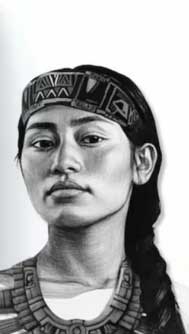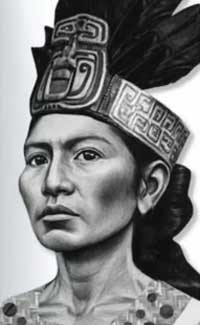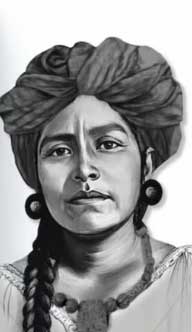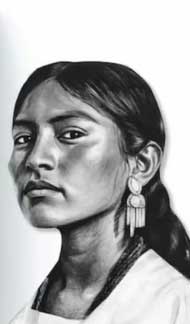2025: Year of the Indigenous Woman in Mexico
Did you know 2025 has been declared the Year of the Indigenous Woman in Mexico?
As a necessary and profound tribute to the women who have, throughout history, been the backbone of our communities, cultures, and struggles. In an effort to recover our collective memory, the government of Mexico has decided to honor these historical figures who have shaped the course of our country. In this article, we’ll explore the emblem that represents Indigenous women through four iconic figures from different cultures: Mexica, Maya, Mixtec, and Toltec.

THE MEXICA WOMAN: TECUICHPO- IXCAXOCHITZIN (WHITE FLOWER)
Ixcaxochitzin, daughter of the great Moctezuma Xocoyotzin, is a symbol of resilience and struggle.
Born around 1509-1510, she witnessed the arrival of the Spanish conquistadors and the fall of Tenochtitlan. But her story doesn’t end there.
As part of a noble family, she was captured by the Spanish but fought for the liberation of her people. She married two great leaders of her time: Cuitláhuac and Cuauhtémoc. Her life was a constant act of resistance, not only against the conquerors but also against the oppression she faced as a woman in a society that didn’t fully recognize her power.
THE MAYA WOMAN: TZ’AK-B’U AHA (THE RED QUEEN)
Representing the Maya culture, Tz’ak-b’u Aha, or the Red Queen, was a prominent figure in politics and religious ceremonies.
Born into nobility in what is now Tabasco, she married Pacal the Great in 626, consolidating a prosperous era for the region of Palenque.
This woman didn’t just shine in the court; she played a central role in the economic, political, and religious activities of her time. Her story remains an example of wisdom and power that still resonates today.


THE MIXTEC WOMAN: SEÑORA 6 MONO (LADY OF HUACHINO)
Señora 6 Mono, one of the great figures of the Mixtec culture, embodies wise and pragmatic leadership. She co-governed with her husband, and her figure is recorded in the Selden Codex, one of the few historical texts that survived the Spanish destruction. She governed during a time of great turmoil, and her name remains immortalized in the historical texts as one of the most influential women in the Mixtec region.
THE TOLTEC WOMAN: XIUHTZATZIN (FLOWER OF THE TOLOTEC EARTH)
Finally, Xiuhtzatzin is the representation of wisdom and serenity.
Without noble lineage, she became the first Toltec queen due to her profound knowledge of her people and their region.
Her story demonstrates that leadership doesn’t always come from lineage but from the ability to guide people with wisdom and humility. As the first woman to govern the Toltecs, Xiuhtzatzin left a deep mark in history.

These women, so diverse in origin but united in their power, are just a small sample of the fundamental role that Indigenous women have played throughout Mexico’s history. They not only helped form our villages but also fought for emancipation, justice, and the preservation of our customs and traditions. It wasn’t only the noble women, but all women— from warriors to wise figures— who worked and fought for a more just and free Mexico.
As we learn about their stories, we realize that many of us, as Mexicans, carry the blood of these warriors who forged the identity of our communities. Their struggles continue to be a powerful reminder that Indigenous women have always been and will continue to be agents of change.
So, in 2025, let’s celebrate not only these historical women but all Indigenous women in Mexico who, day by day, continue to fight for their rights, for their land, and for their communities.
What stories of Indigenous women do you know? Share your thoughts and join the conversation! 💬


